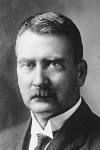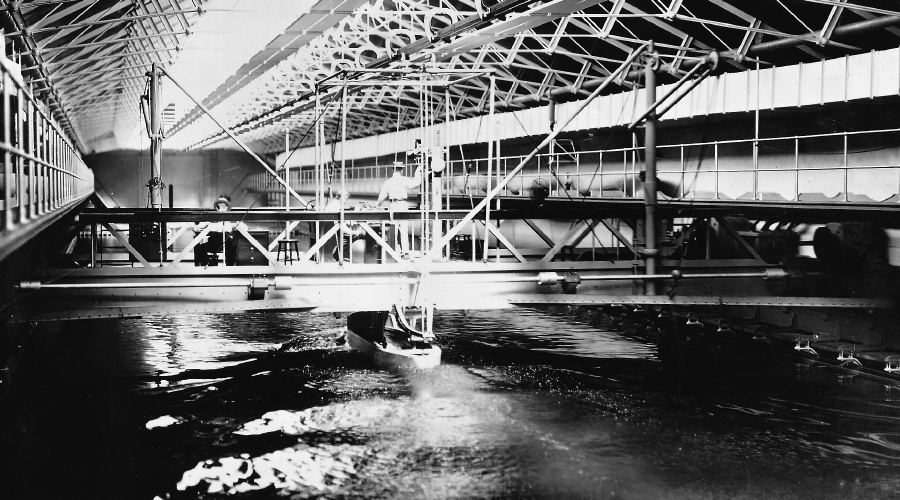 In writing about the Wind Tunnel at the Washington Navy Yard over the past few weeks, I have made passing mention of the Experimental Model Basin, which preceded the wind tunnel by a few years. A few words about that installation today.
In writing about the Wind Tunnel at the Washington Navy Yard over the past few weeks, I have made passing mention of the Experimental Model Basin, which preceded the wind tunnel by a few years. A few words about that installation today.
The late 19th century brought a revolution to engineering, with ever more scientific principles being applied. Instead of trial and error, calculations were used to solve engineering questions. In shipbuilding, the British scientist William Froude led the way with his insight that models of ship hulls could be tested in small bodies of water. The results gleaned from these tests could be applied to full-sized ships. He therefore had the first model basin built in Torquay, England, in 1871. Some 25 years later, the US Navy decided that they needed a similar installation. In 1896, Congress appropriated some $100,000 for this purpose.
The location for this new device was obvious: The Washington Navy Yard. There was also no question as to who should design and build it: David Watson Taylor (pictured above) who, while only 32 years old at the time, was already well-known as naval constructor.
A short article in the Washington Evening Star of November 25, 1897 announced that the new facility would be open by the beginning of the following March described it thusly:
The basin is intended for use in testing the speed and resistance of working models of new vessels of the navy. It is 500 feet long and 45 feet wide, and will hold fourteen feet of water in the main department. A heavy carriage controlled by electricity spans the basin and runs on double tracks. The models are drawn by this carriage, which is provided with [a] delicate mechanism which indicates the speed and resistance of the model.
Mind you,in early March the Navy Yard was still looking for someone to do the electrical installation for the basin. When finally completed, however, the results began to flow quickly. In a January, 1900, report on the previous year, Admiral Philip Hichborn announced that the new battleships would require 2,000 fewer horsepower to achieve the necessary speed, due to tests done in the Model Basin, and changes made to the shape of their hulls because of theses tests.

Intererior of the Experimental Model Basin in 1919, showing a model being towed through the tank (LOC)
Over the next few years, a number of articles were written about the model basin, many with some variation of ‘bathtub’ and ‘play’ in the title. One fact they all commented on was that the models were made of wood. Taylor had insisted on this, for while it made them much more expensive in contrast to the paraffin models used elsewhere, the latter would not have stood up to Washington’s heat and humidity.
A bigger problem, however, was the size of the basin: It simply was not big enough. There was no space for turning tests, and a top speed of 15 knots was no longer acceptable. There was no question of enlarging the current structure, as the new basin was to be longer than the Navy Yard was at its widest, and the ground was already showing signs of being unable to support even the current basin.
Eventually, the Navy settled on a site in Carderock, Maryland, and the David Taylor Model Basin has continued to be an important part of the Navy’s research since it opened in 1940.
